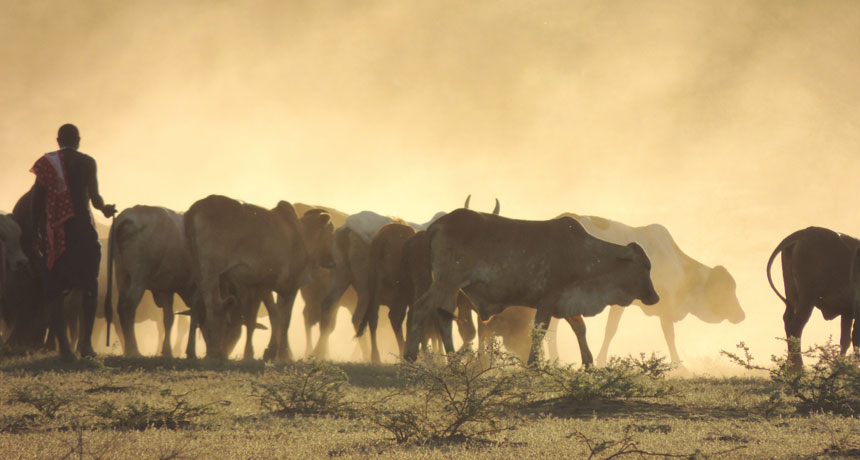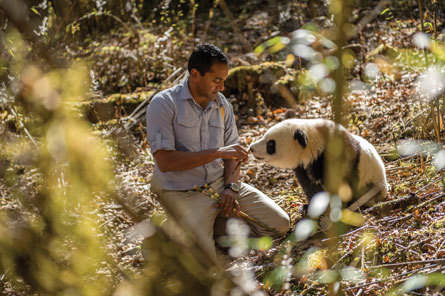‘Earth: A New Wild’ puts people in the picture
Nature series shows humans living with, and not off, their environments

ON THE TRAIL The Maasai people in Kenya have herded cattle sustainably for generations.
Courtesy of Anna McVey
Nature documentaries tend to give glimpses of pristine landscapes, breaching whales and fantastic bird mating displays. But the vistas often ignore something very important: the people just out of the camera’s view.
In the five-episode documentary Earth: A New Wild, which airs beginning February 4 on PBS, the focus is not just on the animals. M. Sanjayan, a conservation scientist, takes viewers around the world to see animals and the human-influenced ecosystems they inhabit. The program demonstrates how animals successfully co-exist — or don’t — alongside our growing human population.
It might be hard to envision connections between logging and herring spawn, vultures and Hinduism or oysters and New York City. But in each episode, Sanjayan shows that ecosystem connections run deep.
In one episode, huge clouds of spawning herring in the bays of British Columbia provide food for salmon. Salmon swim upstream to breed. On the way, some are caught by bears, which range deep into the forest. The fish bones and heads the bears leave behind form an important source of fertilizer for trees several miles from shore. The trees themselves prevent erosion, keeping the bays in pristine condition for spawning herring. Sanjayan describes how breaking just one of these delicate strands — by logging or overfishing, for example — sets off reverberations all over the ecosystem. Simple measures, such as restricting logging of trees in the area, can make an important difference.Each episode focuses on a particular ecosystem, interaction or resource. Unfortunately, the hour on forests is less successful than the other episodes: It jumps abruptly from Ecuador to Indonesia and back again. In the rush, important questions end up unanswered. How do humans in the Amazon rainforest sustain their hunter-gatherer lifestyle? How do trained elephant squads help prevent wild elephants from eating farmers’ crops in Sumatra? There are many stories of human-ecosystem interactions to tell, but the episode might have worked better with fewer stories and more answers.

The narrative through the rest of the episodes is significantly smoother. The tone of the program is hopeful and often deeply affecting. It’s hard not to get a little emotional when Sanjayan shows one of the first releases of a captive-bred panda into the wild.
The program highlights that humans, under the right conditions, can live in harmony with and even help an ecosystem, rather than destroy it. The documentary also features the stunning wildlife footage without which any nature show would be incomplete.
The documentary series is an interesting and inspiring introduction to how people live in, and just not off, their environments. As Sanjayan notes, preserving our wild places is our responsibility: “We humans are not separate from nature. We are part of it.”






